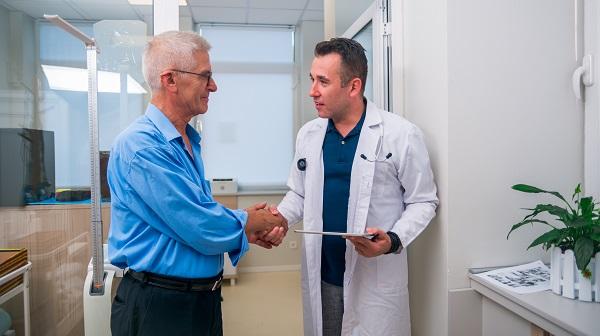Outpatient PCI Takes Hold in US Practice, Muddying Volume Trends
Increasingly, PCI doesn’t involve a hospital stay, thanks to payment incentives, improved safety, and patient preference.

The drop in PCI volumes witnessed over the past decade may have been an illusion, observational data from four US states suggest. That’s because researchers failed to account for the shift toward outpatient procedures that don’t involve hospital stays—as of 2017, they made up half of all PCIs.
Led by Zaid I. Almarzooq, MBBCh (Harvard Medical School, Boston, MA), the study was published last week as a research letter in JAMA Cardiology.
Almarzooq told TCTMD the project was borne out of earlier observations by senior author Robert W. Yeh, MD (Harvard Medical School), whose group had found PCI numbers initially waned after the 2007 publication of the COURAGE trial, thanks to its emphasis on optimal medical therapy in patients with stable CAD.
The question, Almarzooq said, is whether practice continued to evolve in the decade thereafter, especially when outpatient PCI entered the mix. Most studies have excluded those elective procedures, he explained. “What’s notable is when we took a look in a more-inclusive data set, which we have in four states, [we can now see] this big shift in outpatient PCIs that’s happening due to a variety of changes.”
Yeh said they “felt a little bit of a need to correct the record” by capturing outpatient cases. Prior reports “clearly just did not well characterize what we as interventional cardiologists were observing and what our partners at other academic facilities and in community practices [were seeing],” he commented to TCTMD.
What’s added to the challenge, Yeh said, is the patchwork of state registries tracking inpatient and outpatient procedures, plus the lack of a “comprehensive nationwide database that captures good population denominators as well as complete numerators of procedures in this country.”
That outpatient PCI is on the rise is good news, he emphasized, as it reflects confidence in the safety of the procedure.
Florida, Michigan, Maryland, and New York
Almarzooq and colleagues focused their sights on Florida, Michigan, Maryland, and New York. They identified 1,044,698 PCIs performed between 2010 and 2017 by using the Healthcare Cost and Utilization Project State Inpatient Databases and State Ambulatory Surgery and Services Databases, which together capture all inpatient and outpatient procedures done at nonfederal facilities in those four states. Mean age was 65.7 years, and 32% of patients were women. Four in 10 cases (42.9%) were urgent, defined as any STEMI/NSTEMI, and the rest were considered elective.
PCI as a whole declined by 10.5%, driven by a 34.4% decrease in elective PCI, which occurred mostly between 2010 and 2014 before rates leveled off. Urgent PCI rates, in contrast, increased by 15.0%. Stratified by setting, inpatient PCIs decreased by 26.6%. Outpatient PCI cases, while in the minority, rose by 97.1%. All trends were significant, with P values < 0.001.
PCIs per 100,000 People
|
|
2010 |
2017 |
|
Overall |
260.2 |
232.8 |
|
Elective |
165.3 |
123.6 |
|
Urgent |
95.0 |
109.2 |
|
Inpatient |
226.4 |
166.2 |
|
Outpatient |
33.8 |
66.7 |
To TCTMD, Yeh reported that by 2017, these outpatient cases made up 52% of nonurgent PCIs. “That was a rapid growth compared to 2010, when only 20% of elective PCIs were classified as outpatient,” he noted.
Almarzooq said this trend makes sense: “The shift is primarily due to changes in incentives . . . and obviously growing evidence of safety of same-day discharge, as well.
Yeh also said multiple forces are at work, including patient preference, financial considerations, and procedural factors.
Payers not only rewarded outpatient PCI but also “strongly disincentivized inpatient status for procedures” by making sure patients qualified for that designation, said Yeh. Earlier discharge “also opens up beds for hospitals to take in other patients who are more in need of those inpatient beds,” he added.
“But more than that, I think we all have recognized in the community that these procedures can be done safely, especially given the transition to radial—2010 versus 2017. . . . We’re more comfortable discharging a patient who had a radial stick rather than a groin stick in terms of what might happen if they go home,” Yeh concluded.
Caitlin E. Cox is News Editor of TCTMD and Associate Director, Editorial Content at the Cardiovascular Research Foundation. She produces the…
Read Full BioSources
Almarzooq ZI, Wadhera RK, Xu J, Yeh RW. Population trends in rates of percutaneous coronary interventions, 2010 to 2017. JAMA Cardiol. 2021;Epub ahead of print.
Disclosures
- Almarzooq reports no relevant conflicts of interest.
- Yeh reports personal fees from Abbott Vascular, Boston Scientific, Shockwave Medical, Zoll, and Medtronic and grants from Abbott Vascular, Boston Scientific, BD Bard, Cook Medical, Medtronic, the National Heart, Lung, and Blood Institute, Philips, and the Richard A. and Susan F. Smith Center for Outcomes Research in Cardiology outside the submitted work.





Comments